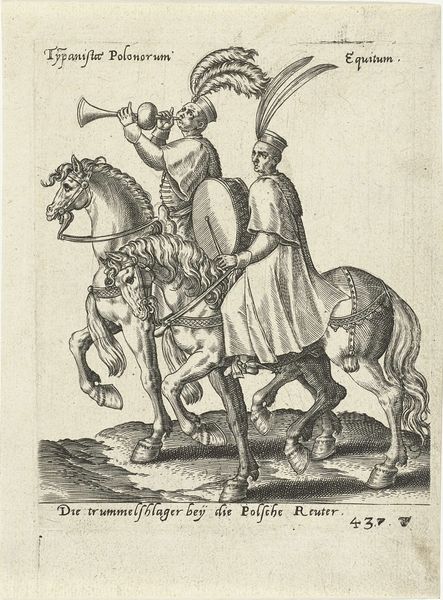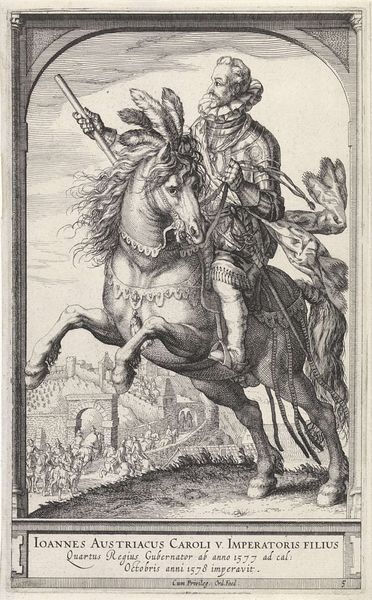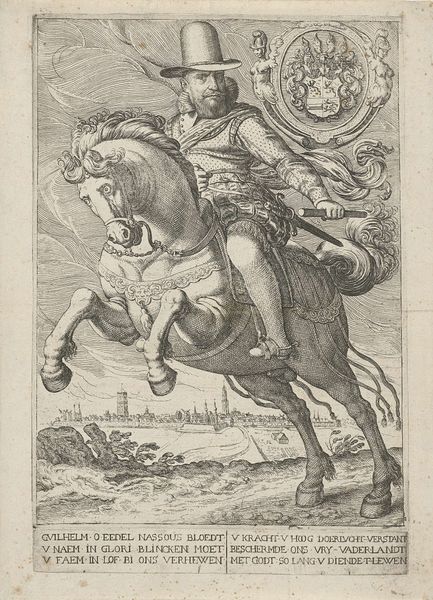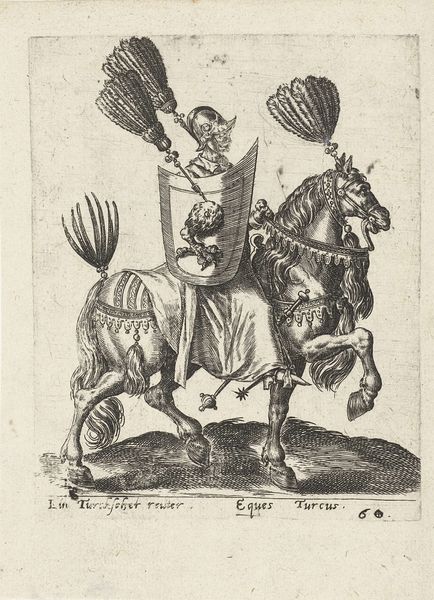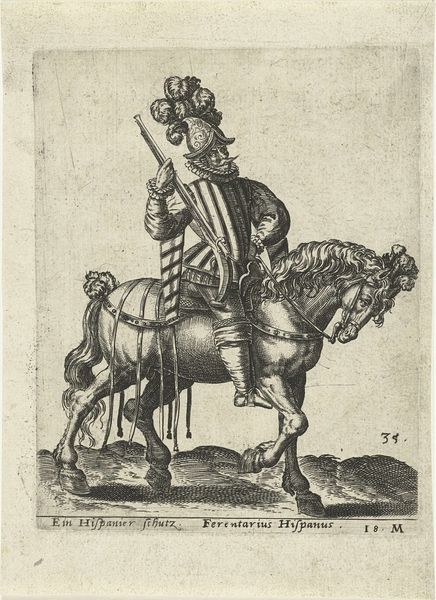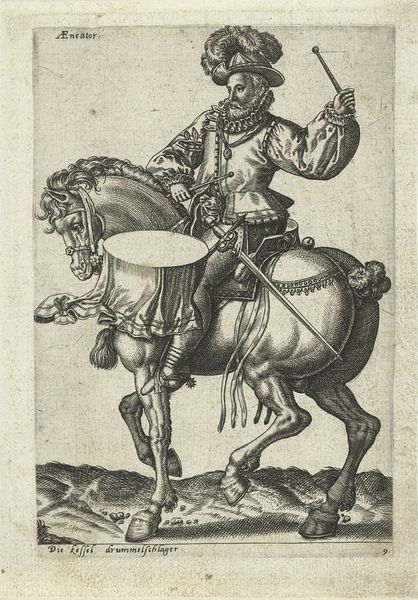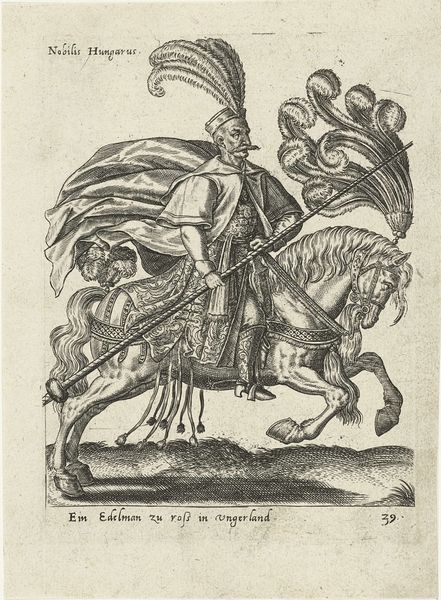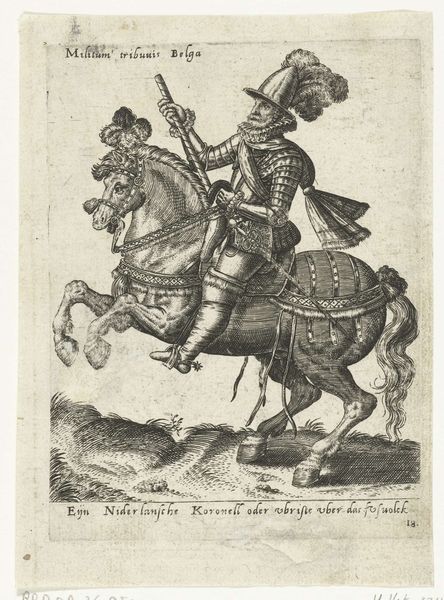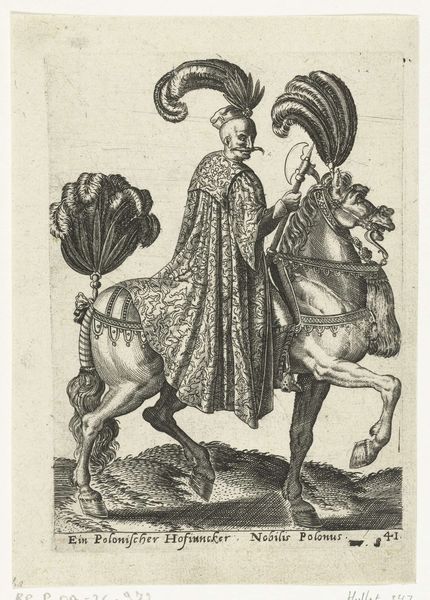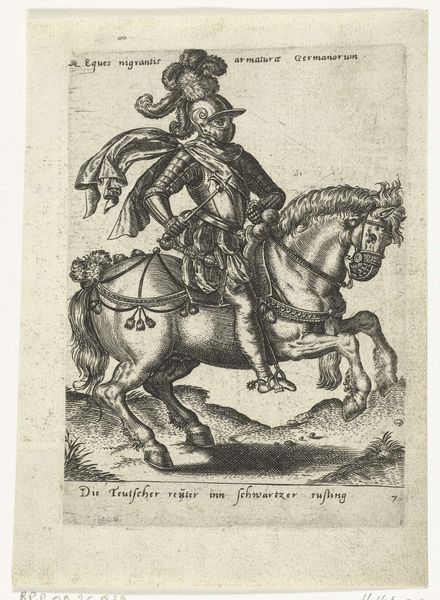
Dimensions: height 148 mm, width 108 mm
Copyright: Rijks Museum: Open Domain
Curator: Before us is a print dating back to 1577. It’s attributed to Abraham de Bruyn, and it’s known as "Poolse ruiter," or "Polish Rider." It's currently held here at the Rijksmuseum. Editor: The first thing that strikes me is how meticulously rendered the figure and horse are, considering it's an engraving. You can almost feel the weight of that plumed headgear! Curator: Yes, De Bruyn's engraving offers an intriguing glimpse into the era's fascination with exotic military figures. Prints like these were often commissioned to disseminate information about foreign powers and cultures. It speaks to a time when images were essential in shaping public opinion about the political landscape of Europe. Editor: And think of the labour involved in creating all these plates! From the initial design and carving, it speaks volumes about the skilled labor force of the time and how art production was tied to broader economic and social conditions. What materials and tools did de Bruyn employ, and how might the choices of such have affected his work's availability and its circulation to different publics? Curator: Absolutely. The 'Polish Rider' isn’t merely a depiction of an individual; it symbolizes a complex interplay of military might and cultural otherness. This print was most likely distributed to specific elites or merchants who were keenly interested in tracking military and cultural events. Editor: It makes me wonder how widely these prints circulated. Who exactly could afford them, and where might they have been displayed? Consider how its function as decoration might impact the materials and how artists produced and valued their labor. Curator: Good points. While precise documentation of ownership is rare, art historians theorize prints of this kind had value because their production quality reflected the status of their owners and their alignment with dominant power structures. They offer insights into artistic patronage during this period. Editor: Thinking about its place in today’s museum context is fascinating too. We are using it as a point to engage museum patrons through visual means. So the materials used, how they impacted access and distribution during its time and how we can engage with it as an image that we can all enjoy now makes me think differently. Curator: Precisely. From military symbolism to consumerism of materials, this “Polish Rider” continues to spur vital reflection centuries after its creation.
Comments
No comments
Be the first to comment and join the conversation on the ultimate creative platform.

